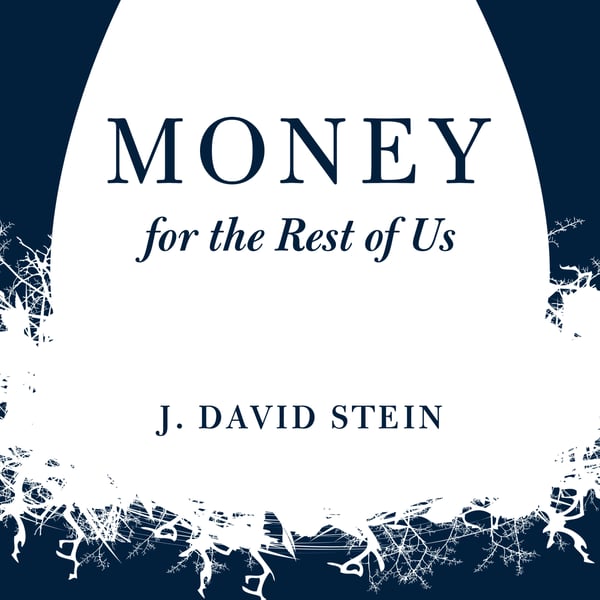Are You Taking Enough Aspirational Risk?
Money For the Rest of Us
J. David Stein
4.3 • 1.3K Ratings
🗓️ 9 October 2024
⏱️ 30 minutes
🧾️ Download transcript
Summary
Why we need distinct risk buckets: balancing our natural loss aversion with the allure of opportunities that offer the potential for massive upside.
Topics covered include:
- What is modern portfolio theory, and what are some of its flaws
- Why so many people have gotten wealthy by being undiversified
- How to balance personal risk, market risk, and aspirational risk
- How prospect theory explains our attraction to positively skewed opportunities
- Why most people won't get wealthy unless they take some aspirational risk
Sponsors
Delete Me – Use code David20 to get 20% off
Insiders Guide Email Newsletter
Get our free Investors' Checklist when you sign up for the free Money for the Rest of Us email newsletter
Our Premium Products
Show Notes
Average, Median, Top 1%, and all United States Net Worth Percentiles—DQYDJ
Related Episodes
82: Unlocking the Power of Positive Skewness: Strategies for Investing, Business, and Creativity
460: Should You Be Invested 100% in Stocks Before and During Retirement? A Recent Study Says Yes.
421: Beware of Survivorship Bias When Investing
Investing Rule One: Avoid Ruin
229: Stop Maximizing Your Returns Using Modern Portfolio Theory
See Privacy Policy at https://art19.com/privacy and California Privacy Notice at https://art19.com/privacy#do-not-sell-my-info.
Transcript
Click on a timestamp to play from that location
| 0:00.0 | Welcome to money for the rest of us. This is a personal finance show on money, how it works, how to invest it, and how to live without worrying about it. |
| 0:10.0 | I'm your host David Stein, and today is episode 496. It's titled Are You Taking |
| 0:16.9 | Enough Aspirational Risk? In 1952 Harry Markowitz of the Rand Corporation published a paper titled Portfolio Selection in the Journal of Finance. |
| 0:29.0 | The paper introduced what came to be known as Modern Portfolio Theory, Markowitz eventually garnered a |
| 0:35.9 | Nobel Prize for his work on portfolio construction. Modern portfolio theory, or MPT, is a method for constructing optimally diversified portfolios |
| 0:47.3 | that maximize the expected return for a given level of risk. Risk in MPT is measured by volatility, specifically |
| 0:58.8 | standard deviation. How much does it give an asset or portfolio deviate from the expected return? |
| 1:06.0 | In order to construct a portfolio using MPT and I did this for years as an institutional investment advisor. We need an expected |
| 1:15.2 | return for each asset class. We need an expected volatility as measured by standard |
| 1:22.1 | deviation and we need a level of correlation between the |
| 1:26.0 | asset types. To what extent do the different asset classes returns track each other? Do they go up and down by the same amount or do they move in |
| 1:35.9 | opposite directions? The optimal portfolio derived from MPT will fall along a risk return line, which is known as the efficient frontier. |
| 1:47.0 | What the model does is it will generate a series of portfolios with certain weights in each of the different asset classes. |
| 1:54.0 | It could be large cap stocks, small cap stocks, bonds, |
| 1:58.0 | any asset class can be included as long as we come up with an expect return, |
| 2:02.0 | a volatility, and a correlation. |
| 2:05.4 | And so the model generates these portfolios and the optimal ones lie along this risk |
| 2:12.3 | return line called the efficient frontier. |
| 2:15.7 | As an institutional advisor, I would run these studies, |
| 2:18.9 | I would meet with an endowment investment committee, we would talk about the different portfolio options |
| 2:25.8 | and look at what the weights were in the different asset classes. |
| 2:29.8 | Here's what I found. |
... |
Please login to see the full transcript.
Disclaimer: The podcast and artwork embedded on this page are from J. David Stein, and are the property of its owner and not affiliated with or endorsed by Tapesearch.
Generated transcripts are the property of J. David Stein and are distributed freely under the Fair Use doctrine. Transcripts generated by Tapesearch are not guaranteed to be accurate.
Copyright © Tapesearch 2025.

